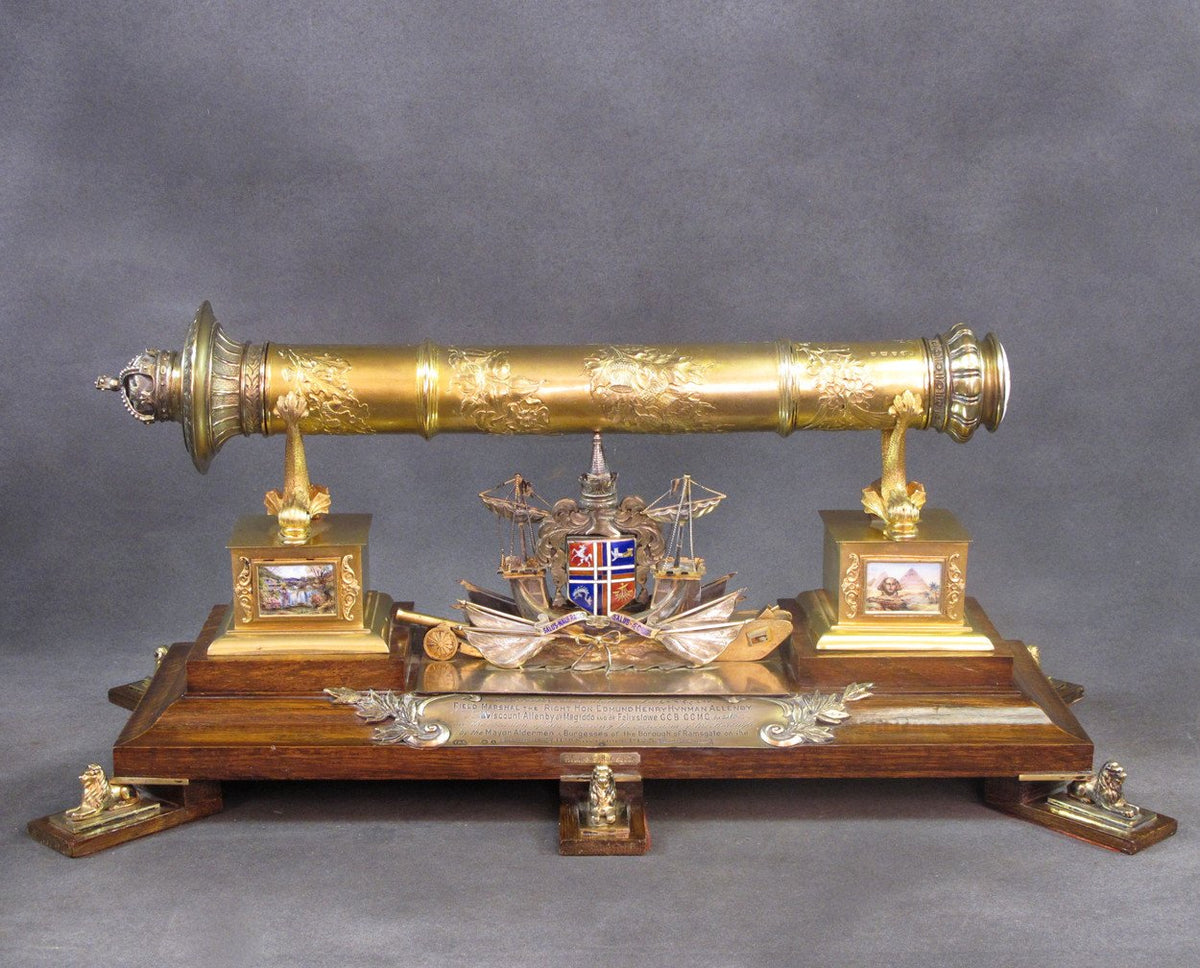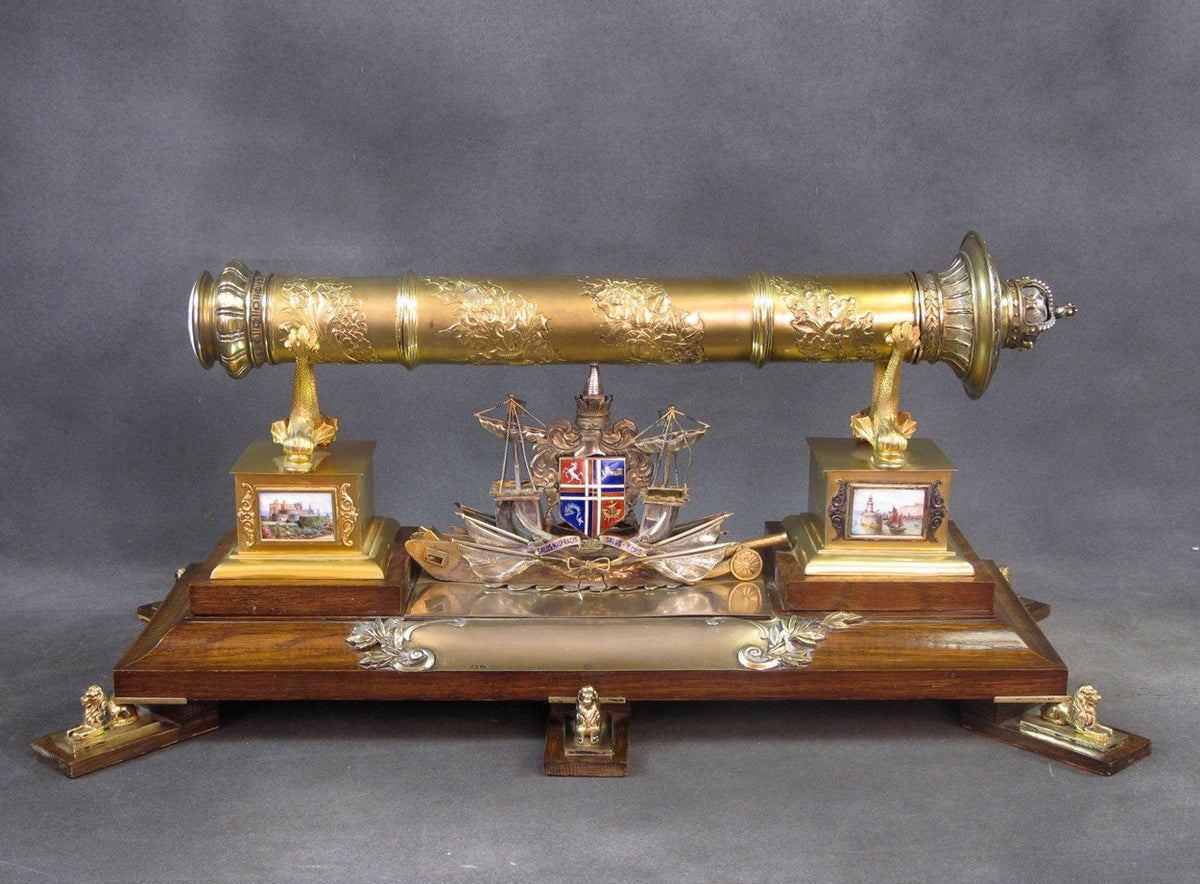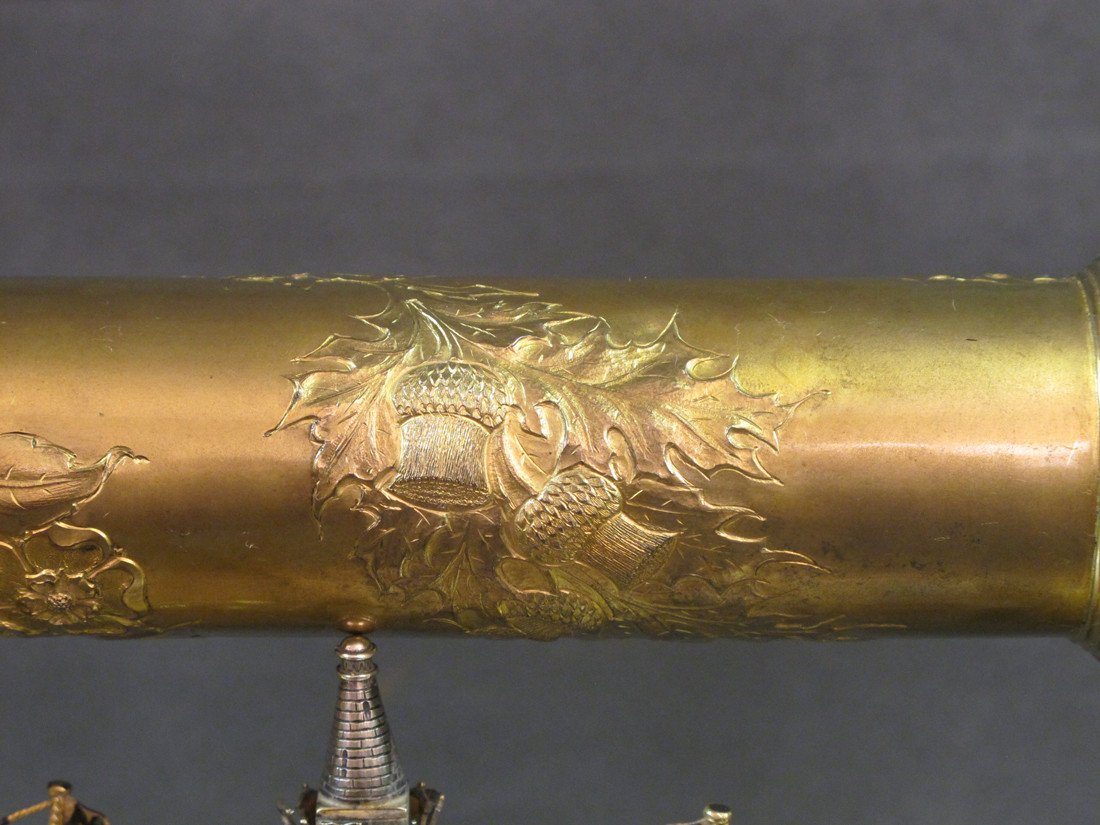British WWI Gilt Field Marshal Baton of Sir Edmund Allenby Viscount of Megiddo Original Items
$ 27.995,00 $ 6.998,75
Original Item: One-of-a-kind. How much better could this be?
Field Marshall Sir Edmund Henry Hynman Allenby, Visciount of Meggido and Felixstowe was possibly the most successful General of WW1. His command was on the Western Front but of greatest success was his leadership in the Middle Eastern theater specifically in Egypt and Palestine where he, using Lawrence of Arabia crushed the Turks during the Arab Revolt more or less removing Turkey from WWI.
This amazing and beautiful solid silver gilt Field Marshal Baton complete on a magnificent stand was presented to Presented to Field Marshall Edmund Allenby, on 11 November 1925 upon his retirement from Government service and returning from the post of Governor of Egypt and Sudan.
Amazingly it has remained in private hands after Allenby’s death in 1936 and only came to light in the 1970s when it was acquired from a Jeweler in England by an avid American collector who has treasured ever since.
Hidden away virtually since it’s presentation almost 90 years ago this has great relevance to WW1 having been carried by possibly more successful commanders.
Beautifully Hallmarked, with quality chasing and enamelwork this represents the best of workmanship from the period. Presented to a National Hero by a grateful nation.
Baton, complete with original stand and original specification documentation also included is a signed photograph of General Allenby in full field uniform, complete with Internet research documents.
Baton measures approximately 20 inches in length and when mount on stand is about 12 inches tall.
Allenby
Field Marshal Sir Edmund Henry Hynman Allenby GCB, GCMG, GCVO, etc., etc.
Edmund Allenby was without doubt one of the most effective Commonwealth commanders during the First World War. Best known for his leadership of the Egyptian Expeditionary Force in 1917 and 1918, his strengths had shown up much earlier. His evaluation as a student of the Staff College at Camberley in the late 1890s concluded
He has energy, good judgment and rapid decision, and is a clear thinker and writer. He is active and a good soldier, and has the power of exerting influence on others and getting good work out of them.
One of the great examples of this talent could be seen in Allenbys support of Col. T. E. Lawrence (Lawrence of Arabia) in leading the Arab Revolt against the Turkish Empire. Of Allenby, Lawrence has written [he was] physically large and confident, and morally so great that the comprehension of our littleness came slow to him.
Allenby was arguably one of the most successful British commanders of the war, utilising strategies he developed from his experiences in the Boer War and on the Western Front towards his Palestinian Campaigns of 191718. His management of the Battle of Megiddo in particular, with its brilliant use of airplanes, infantry, and mobile cavalry, is considered by many to be a precursor to the Blitzkrieg tactics so widely employed by Germany during the Second World War. [From the Wikipedia online encyclopedia article on Allenby]
When the war was over, he served very successfully as British High Commissioner in Egypt from 1919 until 1925. Upon returning from Egypt in 1925, he was given the honorary position of Captain of Deal Castle, one of Englands most recognizable landmarks.
Also in 1925, on November 11, the anniversary of the armistice that ended WW1, Lord Allenby was honored by the nearby city of Ramsgate with a magnificent trophy commemorating his service to the British Empire. The trophy is in the form a field marshals baton with a truly stunning base sculpture.
The trophy is best described by the original document contained inside the baton itself:
The solid silver gilt casket is in the form of a Field Marshals Baton, this is embossed with the Rose, Shamrock, Thistle and Leek together with British Oak Leaves. The Baton is surmounted with the Imperial Crown and at the other end are the arms of Lord Allenby in enamel. This Symbol of the highest Military Rank is supported from an oak base on two pediments and carrying the Baton are two pairs of dolphins, these are one of the quarterings of the Arms of Ramsgate and allude to its fishing industry.
The pediments are faced with four views in coloured enamel:
The Pyramids of Egypt, alluding to the Field Marshals successful campaign there.
Ramsgate Harbour with its world renowned lighthouse and distant view of our new St. Lawrence-at-Cliff Extension.
Deal Castle, Lord Allenbys official residence as Captain of Deal Castle and Deputy Lord Warden of the Cinque Ports, Ramsgate being a Limb of the Cinque Ports; and
The Waterfall on the Madeira Road, one of Ramsgates beauty spots.
The space between the pediments is filled by a very handsome allegorical tableau bearing the Borough Arms of Ramsgate in colours on a Viking Ship also another quartering of the Borough Arms Alluding to Ramsgate as a Port. This is supported by a trophy of flags from each end of which project a Tank and a Cannon.
The oak base is supported by six British Lions.
The front bears a plate inscribed:
Presented to Field Marshal the Right Honourable Edmund Henry Hynman Allenby, Viscount Allenby of Megiddo and of Felixstowe G.C.B., G.C.M.B., &c. &c. on the occasion of his receiving the Freedom of the Borough by the Mayor Aldermen and Burgesses of the Borough of Ramsgate.
11th November, 1925
Alderman W. Coleman J.P. Mayor
A. Blasdale Clarke, Town Clerk.
The whole of the Casket is executed in solid silver heavily gilt to the designs of townsman Mr. P. F. Weeks, Jeweller.
It is enclosed in a leather case lined with velvet and silk.
In addition to his effectiveness as a commander and civil administrator, Lord Allenby is probably the best known of Britains WW1 commanders thanks to his stature in popular culture. Lowell Thomas brought positive attention to him in various publications and in a documentary film With Allenby in Palestine and Lawrence in Arabia. In the late 1920s, Allenby and his wife toured the United States, and it has been said that he was better known in America than T.E. Lawrence.
In the film Lawrence of Arabia, Allenby was given a major role and was portrayed by the distinguished actor Col. John Edward Jack Hawkins CBE. He was also a figure in the fine Australian film, The Lighthorsemen, andbelieve it or nothe had a part in the iconic Indiana Jones stories in the film The Adventures of Young Indiana Jones: Daredevils in the Desert.
Prompt Shipping and Professional Packaging
We provide a variety of shipping options due to our long-running partnerships with UPS, FedEx and DHL. Our warehouse personnel are well trained and will pack the goods according to our exact and precise specifications. Before shipping your items will be thoroughly inspected and secured. Every day, we deliver to thousands of customers in different countries. This is a sign of our determination to become the largest online retailer worldwide. Both Europe as well as the USA have warehouses and distribution centers.
Note that orders containing more than one item will be subject to a processing period that is based to the particular item.
Prior to shipping the items, our staff will carry out an exhaustive inspection of the products you ordered. Today, most orders will be delivered within 48 hours. The estimated delivery time is between 3-7 days.
Returns
The stock is constantly changing. It's not entirely managed by us since we are involved with multiple entities, including the factory and our storage. Therefore, the actual inventory could alter at any time. It is possible that you will not receive your order after the order has been made.
The period of time is 30 days. Unfortunately, if 30 days have passed since you purchased your product, we are unable to provide a refund or exchange.
The item must not be in use and must be in the original packaging. The item must be in the original packaging.
Related products
Uncategorized
Uncategorized
Uncategorized
Angolan Rebel 1970s era 60mm Inert Display Mortar from Angolan Civil War Original Items
Uncategorized
Uncategorized
Uncategorized
Uncategorized
Uncategorized
Uncategorized
Uncategorized
Uncategorized
Uncategorized
Uncategorized
Uncategorized
Uncategorized
Uncategorized
Uncategorized
Armored Burgonet Helmet & Polearm from Scottish Castle Leith Hall Circa 1700 Original Items













































































